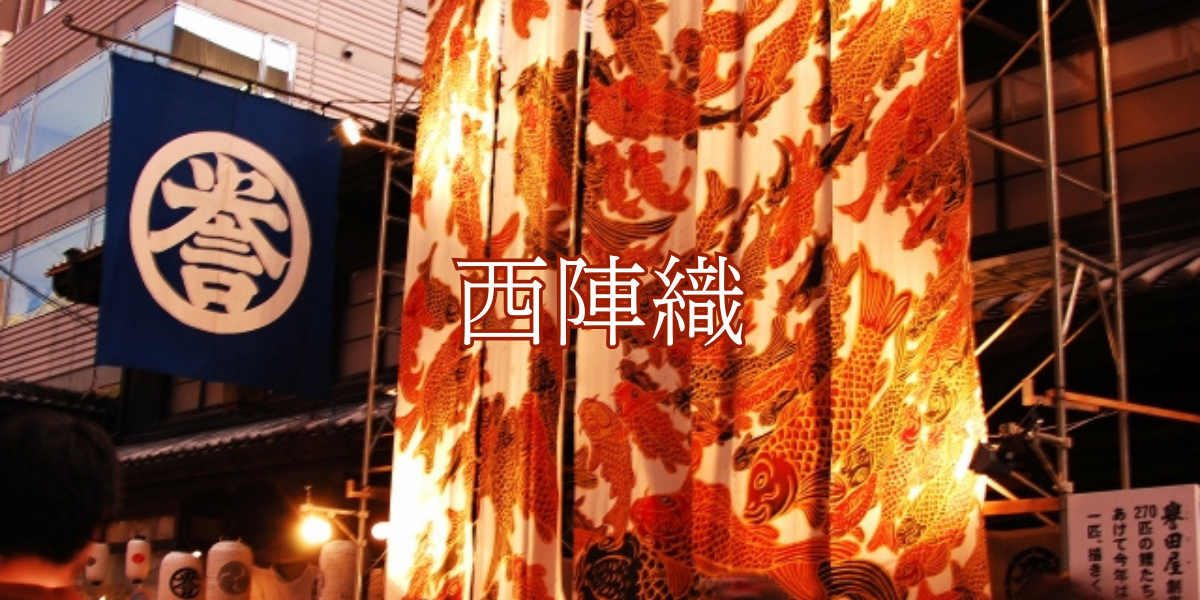Preserving the breath of Japanese tradition and culture, Nishijin-ori continues to enchant people around the world with its beauty and delicacy. This article delves into the rich colors and historical background of Nishijin-ori, a traditional craft from Kyoto, exploring its allure in depth.
What is Nishijin-ori?
Nishijin-ori is a type of woven fabric predominantly made from silk, known particularly for its use in traditional Japanese garments like obis and kimonos. Originating in the Heian period, its name derives from the Nishijin district in Kyoto, where the fabric was first produced. Known for its unique weaving techniques and rich palette, Nishijin-ori has become essential for formal attire.
The Origin of Nishijin-ori
The Nishijin district in Kamigyo-ku, Kyoto, is the heartland of Nishijin-ori. This area, rich in weaving history, has been a hub for textile artisans and remains the center of Japanese weaving craftsmanship, continuously integrating new techniques while preserving traditional quality.
The History of Nishijin-ori
The history of Nishijin-ori is profound, dating back to the Heian period when it was prized among the imperial court and nobility. It evolved through the samurai eras and Edo period, where innovations enhanced its development, solidifying its status as a luxury textile. The artistry of Nishijin-ori particularly flourished during the era of Toyotomi Hideyoshi, who fostered significant advancements in the weaving techniques.
The Manufacturing Process of Nishijin-ori
The creation of Nishijin-ori is a complex and time-consuming process. Here are the main steps involved:
- Design planning – Deciding on the patterns and colors.
- Preparing the warp – Arranging the vertical threads for weaving.
- Inserting the weft – Weaving the horizontal threads to create patterns.
- Beating in – Tightening the weave to form the fabric.
- Finishing – Washing and treating the fabric to finalize the product.
Renowned Nishijin-ori Manufacturers
Here are a few of the leading manufacturers of Nishijin-ori:
- Nishijin Textile Izuju
An established manufacturer known for producing high-quality Nishijin-ori, blending traditional and modern designs.
Address: 123-4 Nishijin Textile Town, Kamigyo-ku, Kyoto - Yamada Textile Co., Ltd.
Known for innovative techniques that integrate traditional beauty.
Address: 567-8 Textile Town, Kamigyo-ku, Kyoto - Tatsumura Art Textiles Co., Ltd.
Renowned for its unique designs and superior craftsmanship, receiving accolades both domestically and internationally.
Address: 234-5 Production Street, Kamigyo-ku, Kyoto
Where Can You Buy Nishijin-ori?
Nishijin-ori products are available at the following locations:
- Kyoto Nishijin Textile Hall
A facility offering a wide range of Nishijin-ori belts and accessories.
Address: 1-2-3 Nishijin Textile Hall Street, Kamigyo-ku, Kyoto - Kimono Yamato
Handling everything from traditional kimonos to modern designed obis.
Address: 456-7 Kimono Town, Nakagyo-ku, Kyoto - Tansuya
Specializing in Nishijin-ori obis, with a variety of Japanese accessories.
Address: 789-0 Wafuku Street, Higashiyama-ku, Kyoto
Related Facilities for Nishijin-ori
Explore these facilities related to Nishijin-ori:
- Nishijin Textile Industry Pavilion
A facility where you can learn about the history and techniques of Nishijin-ori.
Address: 123-4 Traditional Industry Street, Kamigyo-ku, Kyoto - Kyoto Nishijin Textile Crafts Hall
An experiential facility where you can observe the actual manufacturing process.
Address: 567-8 Crafts Hall Street, Kamigyo-ku, Kyoto - Nakano Textile Museum
Displaying ancient Nishijin-ori obis and other materials.
Address: 234-5 Museum Street, Kamigyo-ku, Kyoto
Conclusion on Nishijin-ori
Nishijin-ori is celebrated for its exquisite delicacy and advanced craftsmanship, representing a crucial aspect of Japanese cultural heritage. We invite you to experience the charm of Nishijin-ori firsthand to truly appreciate its artistry and tradition.

























